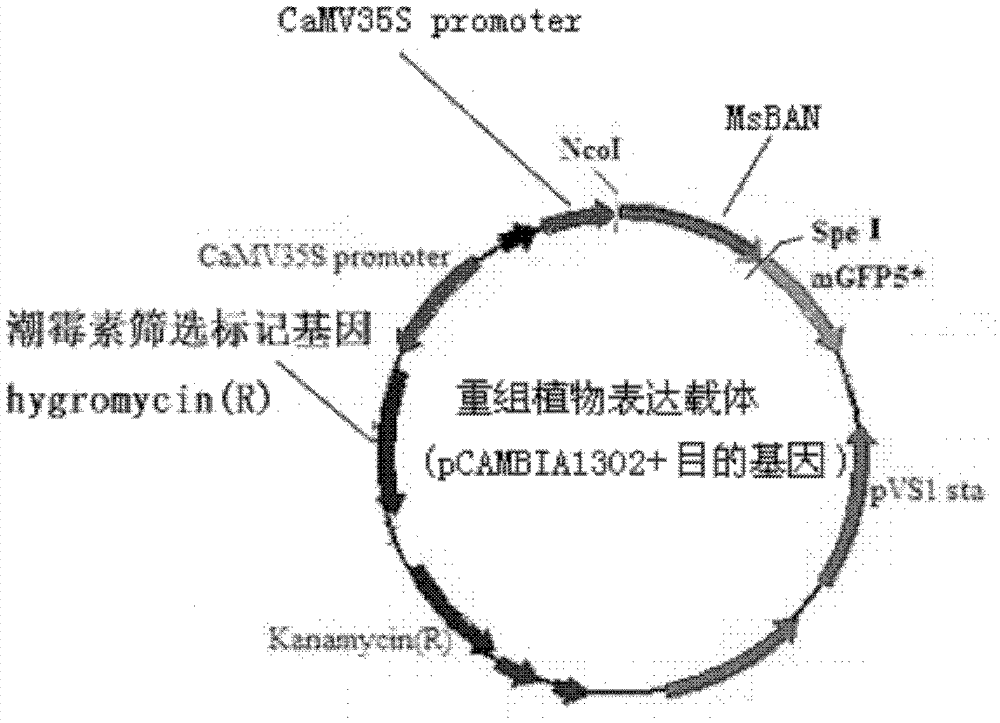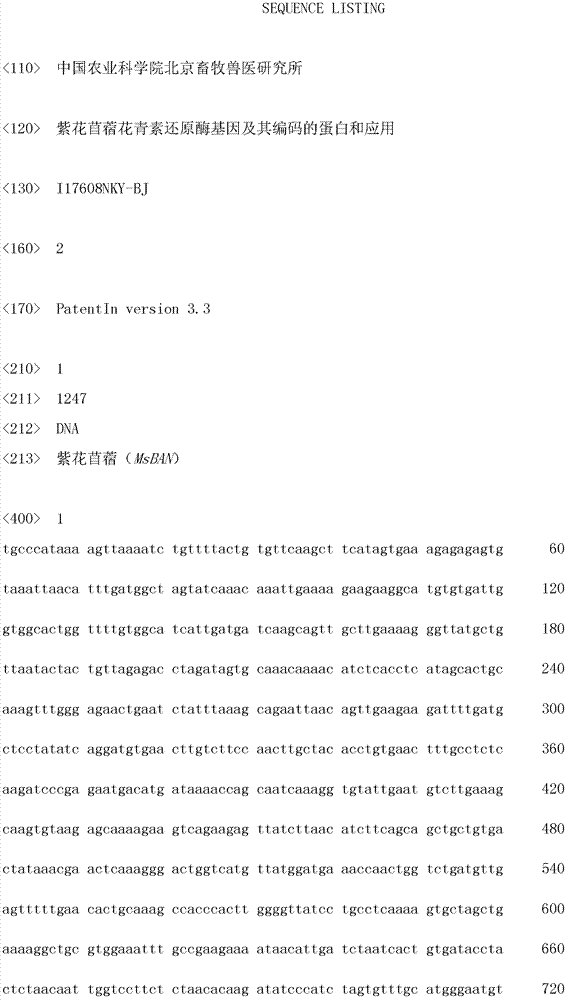Alfalfa anthocyanin reductase gene and its encoded protein and application
A technology of alfalfa and reductase, applied in the direction of oxidoreductase, application, genetic engineering, etc., can solve the problem of less research
- Summary
- Abstract
- Description
- Claims
- Application Information
AI Technical Summary
Problems solved by technology
Method used
Image
Examples
Embodiment 1
[0041] Transformation of Alfalfa Plants with MsBAN Gene Mediated by Agrobacterium
[0042] 1. Materials and Reagents
[0043] 1. Plant material
[0044] The variety of alfalfa tested was Medicago sativa L.cv. Zhongmu No.1 (Zhongmu No.1, Beijing China Animal Science and Technology Co., Ltd.).
[0045] The cotyledons of sterile seedlings germinated for 7 days were the recipient materials for genetic transformation.
[0046] 2. Agrobacterium strains and plasmid vectors
[0047] The Agrobacterium strain used is Agrobacterium tumefaciens: LBA4404 (Beijing Tianenze Gene Technology Co., Ltd.)
[0048] Agrobacterium culture medium:
[0049]
[0050] Plasmid vector: pCAMBIA1302 (purchased from Shanghai Xipiji Biotechnology Co., Ltd.). The MsBAN gene was inserted into pCAMBIA1302, and the specific steps were: design the upstream primer of the NcoI restriction site at the 5' end and the downstream primer of the SpeI restriction site (F: 5'-CATGCCATGGATGATGGCTAGTATCAAAC-3', R: 5'-...
Embodiment 2
[0074] Detect the tannin content in the alfalfa of the alfalfa that is transformed into the pCAMBIA1302 carrier of the MsBAN gene obtained in the alfalfa that is transformed into the alfalfa that obtains in the comparative example 1 of 30 strains and the embodiment 1 of 30 strains, and specific method is as follows:
[0075] A. Preparation of Folin-Denis color reagent: 50g sodium tungstate, 10g phosphomolybdic acid, add 375mL distilled water to dissolve, then add 25mL 85% H 3 PO 4 , reflux in the water bath for 2 hours, and after cooling, set the volume to a 500mL brown bottle;
[0076] B. Extraction of the sample: After the test sample is dried and crushed, accurately weigh 1g, add 50mL of 1:5 ethanol solution in a 250mL conical flask, shake and extract for 60min, and filter with double-layer fast filter paper;
[0077] C. Draw a standard curve: Accurately weigh 50mg of tannin standard substance, set the volume to 500mL, draw tannin standard solution 0, 0.5, 1.0, 1.5, 2.0, 2...
PUM
 Login to View More
Login to View More Abstract
Description
Claims
Application Information
 Login to View More
Login to View More - R&D
- Intellectual Property
- Life Sciences
- Materials
- Tech Scout
- Unparalleled Data Quality
- Higher Quality Content
- 60% Fewer Hallucinations
Browse by: Latest US Patents, China's latest patents, Technical Efficacy Thesaurus, Application Domain, Technology Topic, Popular Technical Reports.
© 2025 PatSnap. All rights reserved.Legal|Privacy policy|Modern Slavery Act Transparency Statement|Sitemap|About US| Contact US: help@patsnap.com



